Da Ma
ChemDFM-R: An Chemical Reasoner LLM Enhanced with Atomized Chemical Knowledge
Jul 30, 2025Abstract:While large language models (LLMs) have achieved impressive progress, their application in scientific domains such as chemistry remains hindered by shallow domain understanding and limited reasoning capabilities. In this work, we focus on the specific field of chemistry and develop a Chemical Reasoner LLM, ChemDFM-R. We first construct a comprehensive dataset of atomized knowledge points to enhance the model's understanding of the fundamental principles and logical structure of chemistry. Then, we propose a mix-sourced distillation strategy that integrates expert-curated knowledge with general-domain reasoning skills, followed by domain-specific reinforcement learning to enhance chemical reasoning. Experiments on diverse chemical benchmarks demonstrate that ChemDFM-R achieves cutting-edge performance while providing interpretable, rationale-driven outputs. Further case studies illustrate how explicit reasoning chains significantly improve the reliability, transparency, and practical utility of the model in real-world human-AI collaboration scenarios.
Neuronal Activation States as Sample Embeddings for Data Selection in Task-Specific Instruction Tuning
Mar 19, 2025Abstract:Task-specific instruction tuning enhances the performance of large language models (LLMs) on specialized tasks, yet efficiently selecting relevant data for this purpose remains a challenge. Inspired by neural coactivation in the human brain, we propose a novel data selection method called NAS, which leverages neuronal activation states as embeddings for samples in the feature space. Extensive experiments show that NAS outperforms classical data selection methods in terms of both effectiveness and robustness across different models, datasets, and selection ratios.
AdaEAGLE: Optimizing Speculative Decoding via Explicit Modeling of Adaptive Draft Structures
Dec 25, 2024



Abstract:Speculative Decoding (SD) is a popular lossless technique for accelerating the inference of Large Language Models (LLMs). We show that the decoding speed of SD frameworks with static draft structures can be significantly improved by incorporating context-aware adaptive draft structures. However, current studies on adaptive draft structures are limited by their performance, modeling approaches, and applicability. In this paper, we introduce AdaEAGLE, the first SD framework that explicitly models adaptive draft structures. AdaEAGLE leverages the Lightweight Draft Length Predictor (LDLP) module to explicitly predict the optimal number of draft tokens during inference to guide the draft model. It achieves comparable speedup results without manual thresholds and allows for deeper, more specialized optimizations. Moreover, together with threshold-based strategies, AdaEAGLE achieves a $1.62\times$ speedup over the vanilla AR decoding and outperforms fixed-length SotA baseline while maintaining output quality.
Reducing Tool Hallucination via Reliability Alignment
Dec 05, 2024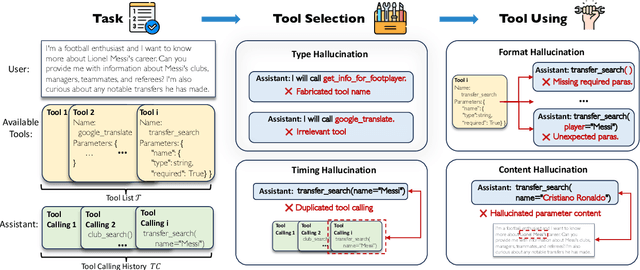
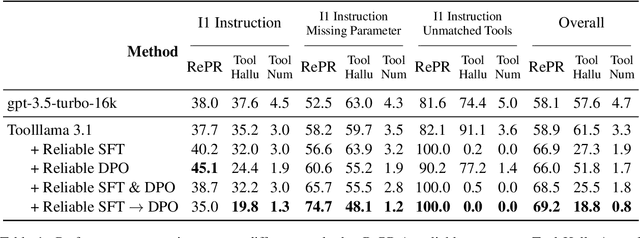
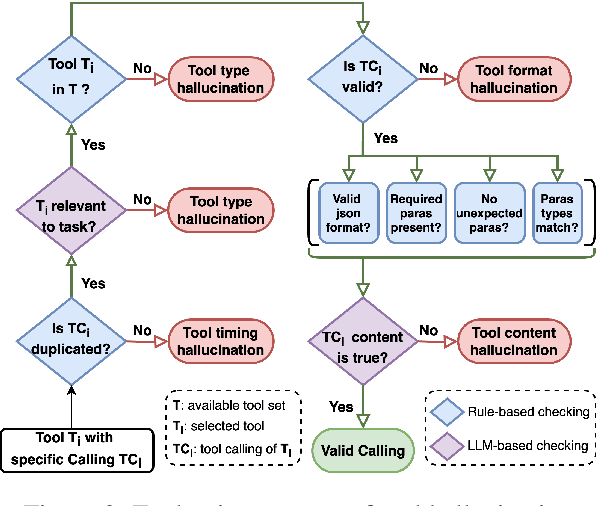
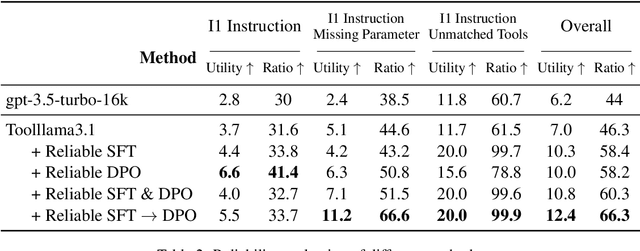
Abstract:Large Language Models (LLMs) have extended their capabilities beyond language generation to interact with external systems through tool calling, offering powerful potential for real-world applications. However, the phenomenon of tool hallucinations, which occur when models improperly select or misuse tools, presents critical challenges that can lead to flawed task execution and increased operational costs. This paper investigates the concept of reliable tool calling and highlights the necessity of addressing tool hallucinations. We systematically categorize tool hallucinations into two main types: tool selection hallucination and tool usage hallucination. To mitigate these issues, we propose a reliability-focused alignment framework that enhances the model's ability to accurately assess tool relevance and usage. By proposing a suite of evaluation metrics and evaluating on StableToolBench, we further demonstrate the effectiveness of our framework in mitigating tool hallucination and improving the overall system reliability of LLM tool calling.
Compressing KV Cache for Long-Context LLM Inference with Inter-Layer Attention Similarity
Dec 03, 2024Abstract:The increasing context window size in Large Language Models (LLMs), such as the GPT and LLaMA series, has improved their ability to tackle complex, long-text tasks, but at the cost of inference efficiency, particularly regarding memory and computational complexity. Existing methods, including selective token retention and window-based attention, improve efficiency but risk discarding important tokens needed for future text generation. In this paper, we propose an approach that enhances LLM efficiency without token loss by reducing the memory and computational load of less important tokens, rather than discarding them.We address two challenges: 1) investigating the distribution of important tokens in the context, discovering recent tokens are more important than distant tokens in context, and 2) optimizing resources for distant tokens by sharing attention scores across layers. The experiments show that our method saves $35\%$ KV cache without compromising the performance.
SciDFM: A Large Language Model with Mixture-of-Experts for Science
Sep 27, 2024



Abstract:Recently, there has been a significant upsurge of interest in leveraging large language models (LLMs) to assist scientific discovery. However, most LLMs only focus on general science, while they lack domain-specific knowledge, such as chemical molecules and amino acid sequences. To bridge these gaps, we introduce SciDFM, a mixture-of-experts LLM, which is trained from scratch and is able to conduct college-level scientific reasoning and understand molecules and amino acid sequences. We collect a large-scale training corpus containing numerous scientific papers and books from different disciplines as well as data from domain-specific databases. We further fine-tune the pre-trained model on lots of instruction data to improve performances on downstream benchmarks. From experiment results, we show that SciDFM achieves strong performance on general scientific benchmarks such as SciEval and SciQ, and it reaches a SOTA performance on domain-specific benchmarks among models of similar size. We further analyze the expert layers and show that the results of expert selection vary with data from different disciplines. To benefit the broader research community, we open-source SciDFM at https://huggingface.co/OpenDFM/SciDFM-MoE-A5.6B-v1.0.
Evolving Subnetwork Training for Large Language Models
Jun 11, 2024



Abstract:Large language models have ushered in a new era of artificial intelligence research. However, their substantial training costs hinder further development and widespread adoption. In this paper, inspired by the redundancy in the parameters of large language models, we propose a novel training paradigm: Evolving Subnetwork Training (EST). EST samples subnetworks from the layers of the large language model and from commonly used modules within each layer, Multi-Head Attention (MHA) and Multi-Layer Perceptron (MLP). By gradually increasing the size of the subnetworks during the training process, EST can save the cost of training. We apply EST to train GPT2 model and TinyLlama model, resulting in 26.7\% FLOPs saving for GPT2 and 25.0\% for TinyLlama without an increase in loss on the pre-training dataset. Moreover, EST leads to performance improvements in downstream tasks, indicating that it benefits generalization. Additionally, we provide intuitive theoretical studies based on training dynamics and Dropout theory to ensure the feasibility of EST. Our code is available at https://github.com/OpenDFM/EST.
Sparsity-Accelerated Training for Large Language Models
Jun 03, 2024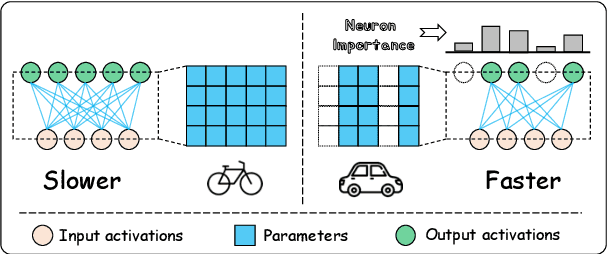
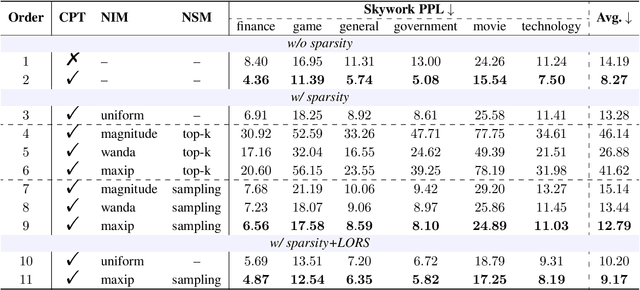
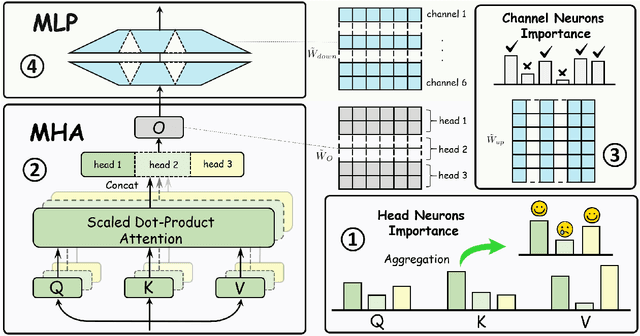

Abstract:Large language models (LLMs) have demonstrated proficiency across various natural language processing (NLP) tasks but often require additional training, such as continual pre-training and supervised fine-tuning. However, the costs associated with this, primarily due to their large parameter count, remain high. This paper proposes leveraging \emph{sparsity} in pre-trained LLMs to expedite this training process. By observing sparsity in activated neurons during forward iterations, we identify the potential for computational speed-ups by excluding inactive neurons. We address associated challenges by extending existing neuron importance evaluation metrics and introducing a ladder omission rate scheduler. Our experiments on Llama-2 demonstrate that Sparsity-Accelerated Training (SAT) achieves comparable or superior performance to standard training while significantly accelerating the process. Specifically, SAT achieves a $45\%$ throughput improvement in continual pre-training and saves $38\%$ training time in supervised fine-tuning in practice. It offers a simple, hardware-agnostic, and easily deployable framework for additional LLM training. Our code is available at https://github.com/OpenDFM/SAT.
Rejection Improves Reliability: Training LLMs to Refuse Unknown Questions Using RL from Knowledge Feedback
Apr 07, 2024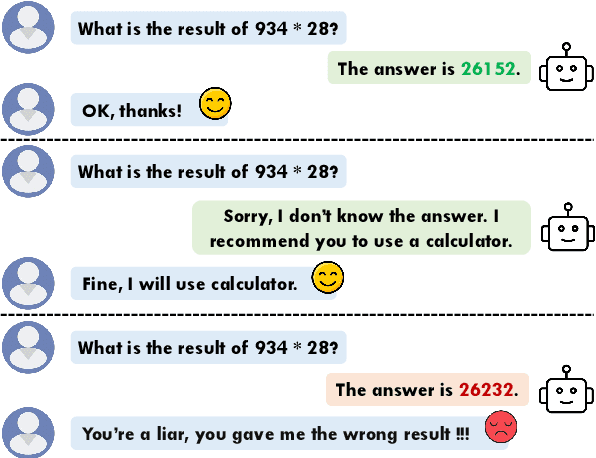

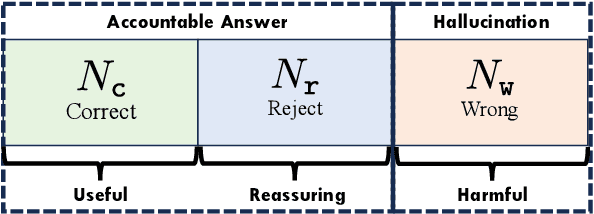
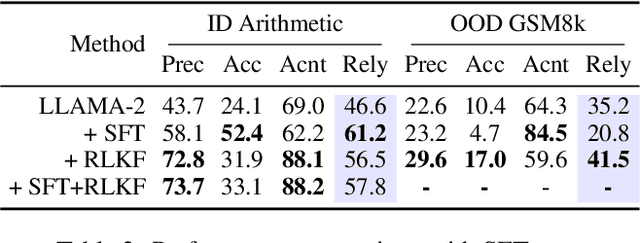
Abstract:Large Language Models (LLMs) often generate erroneous outputs, known as hallucinations, due to their limitations in discerning questions beyond their knowledge scope. While addressing hallucination has been a focal point in research, previous efforts primarily concentrate on enhancing correctness without giving due consideration to the significance of rejection mechanisms. In this paper, we conduct a comprehensive examination of the role of rejection, introducing the notion of model reliability along with corresponding metrics. These metrics measure the model's ability to provide accurate responses while adeptly rejecting questions exceeding its knowledge boundaries, thereby minimizing hallucinations. To improve the inherent reliability of LLMs, we present a novel alignment framework called Reinforcement Learning from Knowledge Feedback (RLKF). RLKF leverages knowledge feedback to dynamically determine the model's knowledge boundary and trains a reliable reward model to encourage the refusal of out-of-knowledge questions. Experimental results on mathematical questions affirm the substantial efficacy of RLKF in significantly enhancing LLM reliability.
Hierarchical Multimodal Pre-training for Visually Rich Webpage Understanding
Feb 28, 2024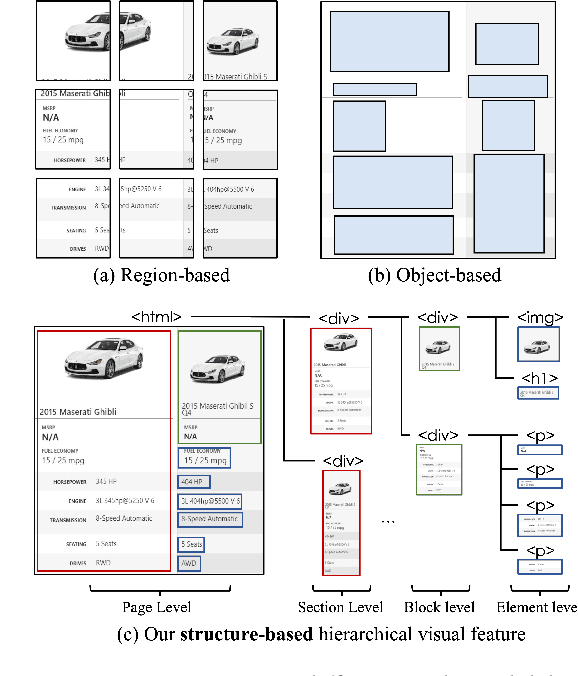
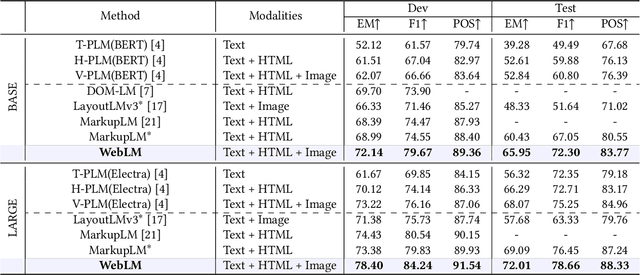
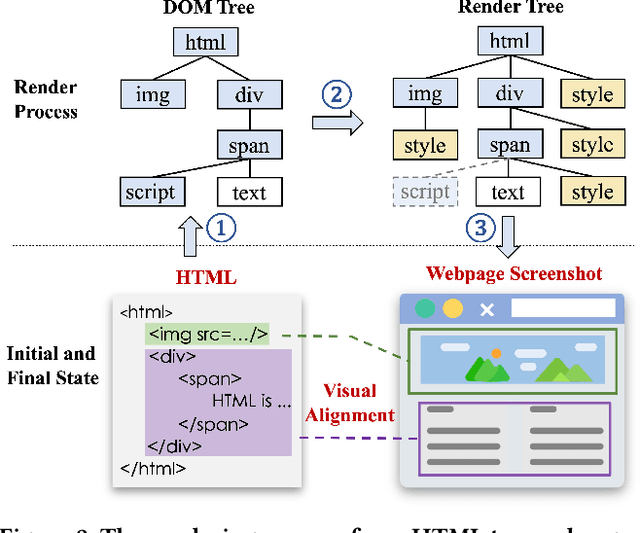
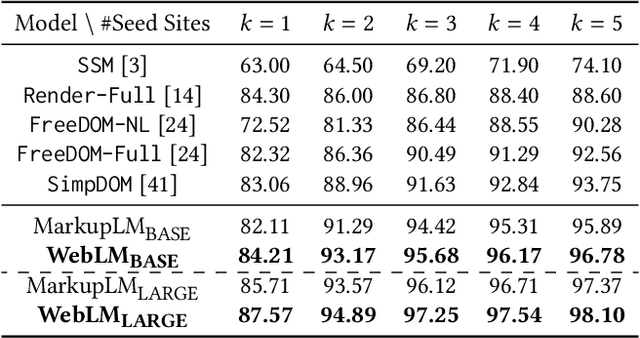
Abstract:The growing prevalence of visually rich documents, such as webpages and scanned/digital-born documents (images, PDFs, etc.), has led to increased interest in automatic document understanding and information extraction across academia and industry. Although various document modalities, including image, text, layout, and structure, facilitate human information retrieval, the interconnected nature of these modalities presents challenges for neural networks. In this paper, we introduce WebLM, a multimodal pre-training network designed to address the limitations of solely modeling text and structure modalities of HTML in webpages. Instead of processing document images as unified natural images, WebLM integrates the hierarchical structure of document images to enhance the understanding of markup-language-based documents. Additionally, we propose several pre-training tasks to model the interaction among text, structure, and image modalities effectively. Empirical results demonstrate that the pre-trained WebLM significantly surpasses previous state-of-the-art pre-trained models across several webpage understanding tasks. The pre-trained models and code are available at https://github.com/X-LANCE/weblm.
 Add to Chrome
Add to Chrome Add to Firefox
Add to Firefox Add to Edge
Add to Edge